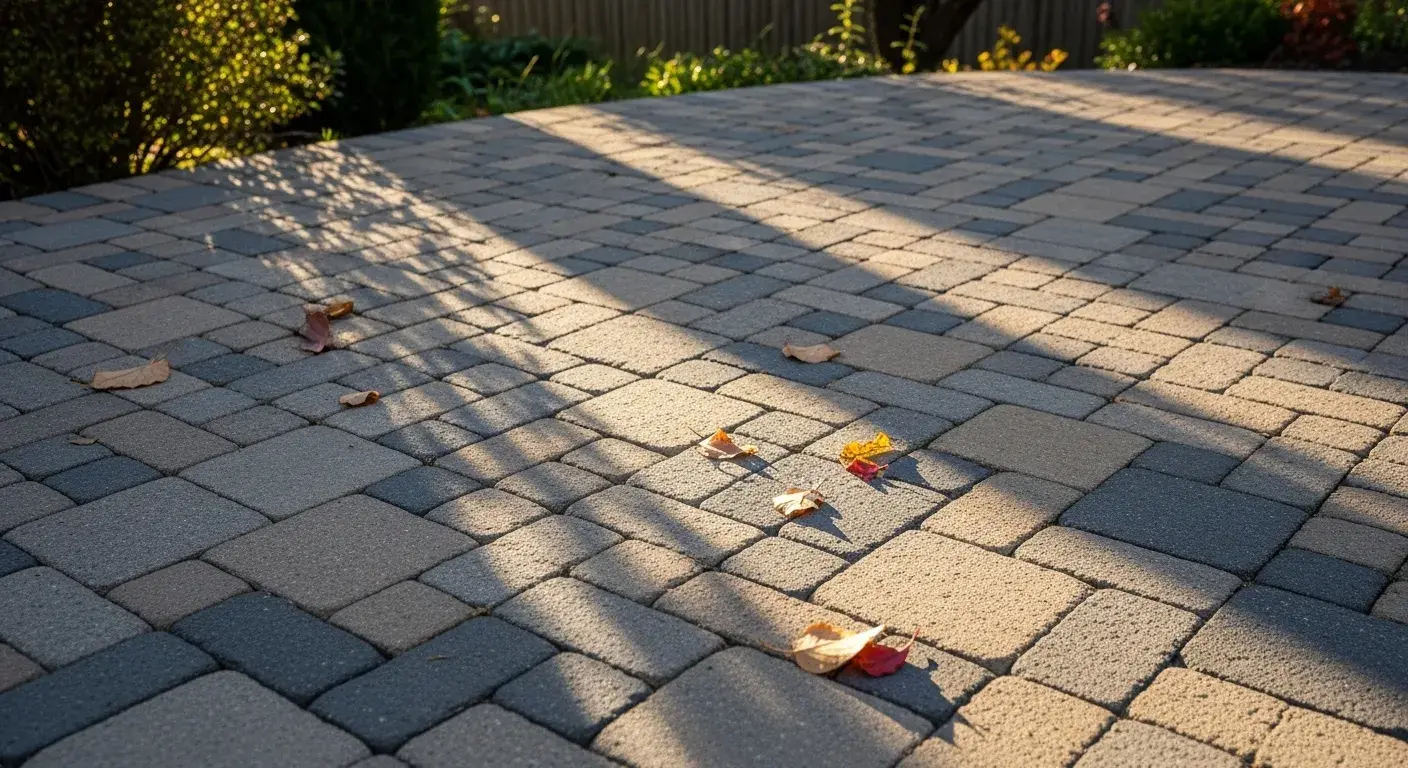Creating a beautiful outdoor living space doesn’t always require extensive excavation and ground disruption. With the right approach and techniques, homeowners can build stunning paver patios above ground, transforming their outdoor areas into functional entertainment spaces without the hassle of digging deep into existing landscaping. This comprehensive guide explores the step-by-step process of constructing an above-ground paver patio, offering practical solutions for those seeking to enhance their outdoor environment while maintaining the integrity of their yard’s existing structure.
Above-ground paver installation San Jose has become increasingly popular among homeowners who want to avoid the complexities of traditional excavation methods. Whether dealing with challenging soil conditions, existing underground utilities, or simply preferring a less invasive approach, building an elevated paver patio offers numerous advantages. The process allows for better drainage management, easier access to utilities beneath the surface, and the flexibility to create multi-level outdoor spaces that complement the natural topography of the property.
Urban Builders & Remodeling has observed a growing trend toward above-ground paver installations, particularly in areas where traditional digging presents challenges. This method proves especially beneficial for properties with established landscaping, shallow utility lines, or rocky soil conditions that make excavation difficult and costly. The technique enables homeowners to create sophisticated outdoor living areas while preserving the existing landscape and minimizing disruption to surrounding vegetation.
The versatility of above-ground paver construction extends beyond simple patio installations. Homeowners can incorporate various design elements, including integrated seating areas, built-in planters, and multi-level configurations that create visual interest and functional zones within the outdoor space. The elevated nature of these installations also provides opportunities for creative drainage solutions and can help address existing water management issues in the yard.
Planning Your Above-Ground Paver Project
Successful above-ground paver installation begins with thorough planning and careful consideration of various factors that will influence the final outcome. The planning phase requires attention to site selection, design considerations, and material choices that will ensure both aesthetic appeal and long-term durability of the installation.
Location selection plays a crucial role in the success of any paver project. When choosing the optimal site for an above-ground patio, consider factors such as sun exposure throughout the day, proximity to the main house for convenience, and the natural drainage patterns of the property. The chosen location should complement the existing landscape while providing adequate space for the intended use. Areas with slight natural slopes can actually benefit above-ground installations, as they provide better drainage and can be incorporated into the design for added visual interest.
Urban Builders & Remodeling recommends evaluating the long-term functionality of the proposed patio location. Consider how the space will be used throughout different seasons and times of day. Morning sun exposure might be ideal for breakfast areas, while western exposure could provide perfect evening entertainment spaces. The relationship between the patio and existing outdoor features such as gardens, pools, or mature trees should also factor into the location decision.
Size and shape determination requires careful measurement and consideration of both current needs and future expansion possibilities. The dimensions of the patio should accommodate planned furniture arrangements while allowing for comfortable movement and circulation. Remember that above-ground installations can be more easily modified or expanded in the future compared to traditional in-ground patios, providing flexibility for changing needs.
Design considerations for above-ground paver patios extend beyond basic dimensions to include elevation changes, integration with existing structures, and accommodation of utilities. The elevated nature of these installations allows for creative incorporation of lighting, irrigation systems, and electrical outlets without the need for extensive underground work. This accessibility makes maintenance and future modifications significantly easier than traditional installations.
Material Selection and Paver Types
The choice of pavers significantly impacts both the appearance and performance of the finished patio. Driveway pavers offer durability and strength suitable for heavy-use areas, while patio pavers provide a wider range of aesthetic options for more decorative applications. The selection should consider factors such as climate resistance, maintenance requirements, and compatibility with the overall design theme of the property.
Interlocking pavers represent an excellent choice for above-ground installations due to their structural stability and ease of installation. These pavers create a unified surface that can better withstand the slight movement that may occur in elevated installations. The interlocking design also facilitates easier replacement of individual pavers if damage occurs, making long-term maintenance more manageable.
Stone pavers bring natural beauty and exceptional durability to above-ground installations. Natural stone options such as flagstone, slate, or granite provide unique textures and colors that complement various architectural styles. These materials often perform exceptionally well in elevated installations, as their natural properties help them adapt to thermal expansion and contraction without compromising the overall integrity of the patio surface.
Urban Builders & Remodeling emphasizes the importance of selecting pavers appropriate for the specific installation method and local climate conditions. Above-ground installations may experience different thermal stresses compared to traditional in-ground patios, making material selection crucial for long-term performance and appearance retention.
Materials and Tools for Above-Ground Construction
Proper preparation and organization of materials and tools streamline the construction process and ensure professional results. Above-ground paver installation requires specific materials that differ somewhat from traditional excavation methods, particularly in terms of base preparation and structural support systems.
The foundation materials for above-ground paver patios include specialized gravel or crushed rock designed for drainage and stability. The gravel base serves as the primary structural support for the entire installation, making quality and proper gradation essential for long-term performance. Angular gravel compacts more effectively than rounded materials, providing superior stability for the overlying paver system.
Bedding sand creates the smooth, level surface necessary for proper paver placement. The sand must be clean, angular, and free from organic materials that could decompose and create settling issues. Proper sand selection and preparation directly impact the final appearance and long-term stability of the paver surface.
Landscape fabric serves multiple purposes in above-ground installations, including weed prevention and soil separation. High-quality landscape fabric prevents the migration of fine soil particles into the gravel base while allowing water to drain freely. This separation is particularly important in above-ground installations where drainage efficiency is crucial.
Paver edging systems provide essential containment for the paver installation, preventing lateral movement and maintaining clean, straight edges. Above-ground installations often require more robust edging solutions due to the elevated nature of the construction. Metal or composite edging materials offer superior durability and can accommodate the unique requirements of elevated installations.
Essential Tools and Equipment
Professional-grade tools significantly impact both the efficiency of the installation process and the quality of the final result. A rubber mallet allows for precise paver placement without damaging the surface, while a quality level ensures proper alignment and grade throughout the installation.
Compaction equipment, including hand tampers and plate compactors, is essential for creating stable base layers and properly setting the completed paver surface. The type and size of compaction equipment should match the scale of the project and the specific requirements of the base materials being used.
Measuring and layout tools, including measuring tapes, string lines, and marking paint, help ensure accurate dimensions and proper alignment throughout the construction process. Precision in layout directly impacts the visual appeal and structural integrity of the finished patio.
Safety equipment protects workers throughout the construction process. Proper safety gear includes work gloves, safety glasses, and appropriate footwear. Above-ground construction may present unique safety considerations, particularly when working with elevated surfaces and compaction equipment.
Step-by-Step Construction Process
The construction of an above-ground paver patio follows a systematic approach that ensures proper drainage, structural stability, and aesthetic appeal. Each step builds upon the previous work, making attention to detail and proper execution crucial for achieving professional results.
Site preparation for above-ground installations focuses on creating a stable, level foundation without extensive excavation. The existing ground surface should be cleared of vegetation, debris, and any organic materials that could decompose and cause settling. While minimal excavation may be necessary to create a level base, the goal is to work with the existing grade as much as possible.
Urban Builders & Remodeling recommends careful evaluation of the existing soil conditions and drainage patterns before beginning construction. Understanding how water moves across the site helps inform decisions about grading and drainage integration that will ensure long-term performance of the paver installation.
The installation of landscape fabric, while optional, provides significant benefits in above-ground applications. The fabric should be cut to fit the entire patio area with appropriate overlap at seams. Proper installation prevents weed growth while maintaining drainage efficiency, which is particularly important in elevated installations where water management is crucial.
Gravel base installation forms the structural foundation of the above-ground patio. The gravel should be spread evenly across the prepared area to a depth of 4-6 inches, depending on the specific requirements of the installation and local soil conditions. Proper compaction of the gravel base is essential for preventing settling and ensuring long-term stability.
The compaction process requires systematic coverage of the entire base area, with particular attention to edges and corners where settling is most likely to occur. Multiple passes with compaction equipment may be necessary to achieve the required density and stability. The finished gravel base should be level and firm, providing a solid foundation for the subsequent layers.
Installing Support Systems and Edging
Paver edging installation provides essential containment for the paver system while creating clean, finished edges. The edging should be installed around the entire perimeter of the patio area, with careful attention to corners and curves. Proper edging installation prevents lateral movement of pavers and maintains the structural integrity of the installation over time.
The edging system should be securely anchored to prevent movement while allowing for proper drainage. In above-ground installations, edging may need to accommodate greater height differentials and may require additional support compared to traditional in-ground installations. The chosen edging material should be compatible with the selected pavers and appropriate for the specific installation conditions.
Bedding sand installation creates the smooth, level surface necessary for proper paver placement. The sand should be spread evenly over the compacted gravel base and leveled using a screed or straight board. The depth of bedding sand typically ranges from 1 to 1.5 inches, depending on the specific paver type and installation requirements.
Proper sand leveling ensures uniform support for the pavers and prevents rocking or settling after installation. The sand surface should be smooth and level, with consistent depth across the entire patio area. Any footprints or disturbances in the sand surface should be repaired before paver installation begins.
Paver Installation and Finishing
The actual paver installation process requires careful attention to pattern alignment, joint spacing, and level consistency. Beginning from a straight edge or corner, pavers should be placed tightly together according to the chosen pattern. Each paver should be seated properly in the bedding sand using a rubber mallet, ensuring consistent elevation and alignment.
Custom pavers San Jose installations often incorporate unique patterns or designs that require careful planning and execution. The pattern should be established early in the installation process and maintained consistently throughout the project. Any cuts or adjustments should be made with appropriate tools to ensure clean, precise edges.
Regular checking with a level ensures that the paver surface remains consistent and properly aligned. Any discrepancies should be addressed immediately by adjusting the bedding sand or paver placement. The goal is to create a smooth, level surface that provides safe, comfortable use while maintaining visual appeal.
Joint filling completes the structural integrity of the paver installation. Sand or polymeric sand should be swept into the joints between pavers, filling them completely while avoiding excess material on the paver surface. Proper joint filling prevents lateral movement and helps maintain the overall stability of the installation.
The final compaction process sets the pavers firmly in place and ensures proper joint fill. A plate compactor should be used to compact the entire paver surface, helping to seat the pavers properly and settle the joint material. Multiple passes may be necessary to achieve optimal compaction and surface consistency.
Advanced Techniques and Design Considerations
Above-ground paver installations offer unique opportunities for creative design elements and advanced construction techniques. The elevated nature of these installations allows for integration of lighting systems, drainage features, and architectural elements that enhance both functionality and aesthetic appeal.
Residential pavers can be incorporated into multi-level designs that create visual interest and define different functional areas within the outdoor space. Changes in elevation can be achieved through stepped installations or terraced designs that work with the natural topography of the site. These design elements add sophistication to the installation while providing practical benefits such as improved drainage and space definition.
Integration of lighting systems is significantly easier in above-ground installations compared to traditional in-ground patios. Electrical conduits and fixtures can be incorporated into the support structure without extensive excavation, allowing for sophisticated lighting designs that enhance both safety and ambiance. Low-voltage LED systems are particularly well-suited for above-ground installations due to their energy efficiency and ease of installation.
Drainage integration becomes particularly important in above-ground installations, where proper water management prevents damage to both the paver surface and surrounding landscape. Drainage systems can be incorporated into the support structure, directing water away from the patio area and preventing pooling or erosion issues.
Urban Builders & Remodeling has found that above-ground installations often provide superior drainage performance compared to traditional in-ground patios, as the elevated structure naturally promotes water movement away from the paved surface. This advantage can be enhanced through careful grading and the integration of drainage features during construction.
Maintenance and Long-Term Care
Above-ground paver installations require specific maintenance approaches that differ from traditional in-ground patios. The elevated nature of these installations may make them more susceptible to certain types of movement or settling, making regular inspection and maintenance important for long-term performance.
Regular inspection should focus on joint integrity, paver alignment, and edge containment. Any signs of movement or settling should be addressed promptly to prevent more extensive damage. The accessibility of above-ground installations often makes maintenance easier, as the underlying support structure remains accessible for repairs or adjustments.
Joint maintenance involves periodic reapplication of sand or polymeric sand to maintain proper joint fill and prevent lateral movement of pavers. Weather conditions and usage patterns influence the frequency of joint maintenance, with high-traffic areas requiring more frequent attention.
Edge maintenance ensures that the containment system continues to provide proper support for the paver installation. Regular inspection of edging systems helps identify potential issues before they impact the overall integrity of the installation. The elevated nature of above-ground installations may place additional stress on edging systems, making this maintenance particularly important.
Professional Installation Considerations
While above-ground paver installation can be a rewarding DIY project, certain situations benefit from professional expertise. Complex designs, large installations, or challenging site conditions may require the knowledge and experience that paver contractors San Jose can provide.
Professional installation ensures compliance with local building codes and regulations, which may have specific requirements for above-ground structures. Professional contractors understand these requirements and can ensure that the installation meets all applicable standards while achieving the desired aesthetic and functional goals.
Urban Builders & Remodeling brings extensive experience in above-ground paver installations, understanding the unique challenges and opportunities these projects present. Professional installation can provide warranty coverage and ongoing support that protects the investment in the outdoor living space.
The decision between DIY and professional installation should consider factors such as project complexity, available time, tool requirements, and desired warranty coverage. Professional installation may be particularly beneficial for installations requiring electrical work, complex drainage systems, or integration with existing structures.
Seasonal Considerations and Climate Factors
Above-ground paver installations may respond differently to seasonal changes compared to traditional in-ground patios. Understanding these differences helps ensure optimal performance throughout the year and informs maintenance scheduling and design decisions.
Thermal expansion and contraction may be more pronounced in above-ground installations due to increased exposure to temperature variations. Proper joint spacing and material selection help accommodate these movements without compromising the installation’s integrity.
Winter conditions may present unique challenges for above-ground installations, particularly in areas subject to freeze-thaw cycles. Proper drainage and material selection help prevent damage from ice formation and thermal cycling. The elevated nature of above-ground installations often provides better drainage, reducing the risk of ice-related damage.
Outdoor pavers selected for above-ground installations should be rated for the specific climate conditions they will experience. Materials that perform well in elevated installations may differ from those optimal for ground-level applications, making proper selection crucial for long-term performance.
Urban Builders & Remodeling emphasizes the importance of understanding local climate conditions when planning above-ground paver installations. Regional factors such as rainfall patterns, temperature extremes, and soil conditions all influence design decisions and material selection for optimal performance.
Building an above-ground paver patio represents an excellent solution for homeowners seeking to enhance their outdoor living space without the complexity and expense of traditional excavation methods. This approach offers numerous advantages, including easier installation, better drainage, and the flexibility to create sophisticated outdoor environments that complement existing landscaping.
The key to successful above-ground paver installation lies in careful planning, proper material selection, and attention to detail throughout the construction process. Whether undertaken as a DIY project or completed by professional contractors, these installations provide lasting value and enjoyment for homeowners who appreciate quality outdoor living spaces.
Paver design ideas for above-ground installations continue to evolve, incorporating new materials, technologies, and design concepts that enhance both functionality and aesthetic appeal. The growing popularity of these installations reflects their practical advantages and the beautiful results they can achieve when properly executed.
Urban Builders & Remodeling continues to see growing interest in above-ground paver installations as homeowners discover the benefits of this construction method. The combination of easier installation, superior drainage, and design flexibility makes above-ground paver patios an attractive option for a wide range of outdoor living projects, from simple entertaining areas to sophisticated multi-level outdoor environments that serve as extensions of the home’s living space.


